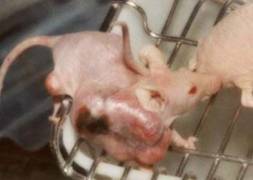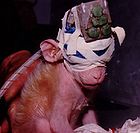
Both the largest number and greatest variety of animals are used in this type of research. Scientists claim that this research is used to increase the knowledge of the way organisms behave, develop and function. There are three specific experiments used for this type of research: Mutagenesis - Where scientists purposely create mutant animals (mice, rats etc) by using radiation (exposure or injections) or transposons (a segment of DNA that is capable of independently replicating itself and inserting a copy into a new position within the same chromosome. Transposons act similarly to viruses and in humans are known to be an underlying cause of cancer, hemophilia and certain other diseases) inserted into their genes. Scientists claim that studying the changes in these mutant animals help them to understand how organisms develop “normally”. Behavior Experiments - Where scientists try to understand how organisms detect and interact with each other and their environment, by manipulating the animals vision, taste, hearing, touch and smell. Scientists claim that by purposely manipulating these functions in animals, that they can help humans who were born or whom live with such hindrances. They also claim that performing these tests on the “intelligent” species of animals (monkeys, birds and rats) helps them to find ‘enrichment’ in their lives as it allows them to engage in a wider range of activities, while in captivity. Breeding experiments are also used to aid in the study of evolution and genetics. This is done by inbreeding generations of animals and insects to create strains of DNA with defined characteristics. “Pure” breeds. |
||
 |
 |
|
Mutated mouse. |
Britches the monkey, whose eyes were sewn shut to further science in the research of how blind people cope. He was rescued by animal rights activists. |
|
|
|
||
|
||